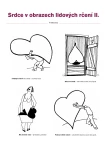Rehabilitation after myocardial infarction (II). Methods of exercise.
Authors:
doc. MUDr. Václav Chaloupka, CSc.; doc. MUDr. Lubomír Elbl, CSc.
Authors‘ workplace:
FN Brno, pracoviště Bohunice
; oddělení funkčního vyšetřování
Published in:
Kardiol Rev Int Med 2005, 7(2): 73-76
Category:
Editorial
Overview
The key to rehabilitation of cardiac patients is endurance aerobic training, which means sustained dynamic exercise below or above the aerobic threshold. The most frequent forms of the training are walking, running, swimming; using exercise bike or outdoor cycling. Lately, as another part of training, strength training has been used. Strength training means strengthening upper and lower limb muscles while using particular workload on fitness equipment. This brings not only improvement in strength but also in endurance of patients. Balanced workout of upper and lower limbs better reflects patients’ needs for both occupational and recreational movement activities.
Key words:
rehabilitation, myocardial infarction, aerobic training, strength training
Sources
1. Hall LH. Developing a Managing Cardiac Rehabilitation Programs. Champaign: Human Kinetics Publishers 1993.
2. Lansett L, Paumer L, Amsterdam EA. Exercise training in coronary artery disease. Cardiology Clinics 1987; 5: 211–225.
3. Daub WD, Knapik GP, Black WR. Strength Training Early After Myocardial Infarction. J Cardiopulmonary Rehabil 1996; 16: 100–108.
4. Fragnoli-Munn K, Savage PD, Ades PA. Combined Resistive Aerobic Training in Older Patients With Coronary Artery Disease Early After Myocardial Infarction. J Cardiopulmonary Rehabil 1998; 18: 416-420.
5. Morrison CHA, Norenberg RG. Using the exercise test to create the exercise prescription. Primary Care 2001; 28: 137–158.
6. Placheta Z et al. Zátěžové vyšetření a pohybová léčba. Brno: MU 2001.
7. Balady GJ, Berra KA, Holding LA et al. ACSM´s Guidelines for exercise testing and prescription. Philadelphia: Lippincott Williams & Wilkins 2000.
8. Jugdutt BI, Michorowski BL, Kappagoda CT. Exercise training after anterior Q wave myocardial infarction: Importance of regional left ventricular function and topography. J Am Coll Cardiol 1988; 12: 362–372.
9. Stewart KL, Mc Farland LD, Weinhofer JJ et al. Safety and Efficacy of Weight Training Soon After Acute Myocardial Infarction. J Cardiopulmonary Rehabil 1998; 18: 37–34.
10. Adams KJ, Barnard KL, Swank AM et al. Combined High-Intensity Strength and Aerobic Training in Diverse Phase II Cardiac Rehabilitation Patients. J Cardiopulmonary Rehabil 1999; 19: 209–215.
11. Franklin BA, Bonzheim K, Gordon S et al. Resistance training in cardiac rehabilitation. J Cardiopulmonary Rehabil 1991; 11: 99-107.
12. Cannistra LB, Davidoff R, Picard MH, Balady GJ. Moderate-High Intensity Exercise Training after Myocardial Infarction: Effect on Left Ventricular Remodeling. J Cardiopulmonary Rehabil 1999; 19: 373–380.
13. Giannuzzi P, Tavazzi L, Temporelli PL et al. Long-term physical training and left ventricular remodeling after anterior myocardial infarction: results of the exercise in anterior myocardial infarction (EAMI) trial. J Am Coll Cardiol 1993; 22: 1821–1829.
14. Dvořák I, Blaha M, Němcová H. Krevní tlak při isometrické zátěži. Čas Lék Čes 1981; 120: 1599–1601.
15. Elbl L, Chaloupka V, Vychodil E. Isometrická zátěž v diagnostice juvenilní hypertenze. Voj Zdrav Listy 1987; LVI: 144-149.
16. Williams PT. High-density lipoprotein cholesterol and other risk factors for coronary heart disease in female runners. N Engl J Med 1996; 334: 1298–1303.
17. Niebauer J, Habrecht E, Velich T et al. Attenuated progression of coronary artery disease after 6 years of multifactorial risk intervention: role of physical exercise. Circulation 1997; 96: 2534–2541.
18. Chaloupka V, Elbl L, Nehyba S. Silový trénink u nemocných po infarktu myokardu. Vnitřní Lék 2000; 46; 829-834.
19. Beniamini Y, Rubenstein JJ, Faigenbaum AD et al. High-Intensity Strength Training of Patient Enrolled in an Outpatient Cardiac Rehabilitation Program. J Cardiopulmonary Rehabil 1999; 19: 8–17.
20. Elbl L, Chaloupka V, Tomášková I et al. Silový trénink u nemocných po akutním infarktu myokardu se sníženou ejekční frakcí levé komory srdeční. Vnitřní Lék 2005; 51: 41-47.
21. Pollock ML, Franklin BA, Balady GJ et al. Resistance Exercise in Individuals With and Without Cardiovascular Disease. Benefits, Rationale, Safety, and Prescription. An Advisory from the Committee on Exercise, Rehabilitation, and Prevention, Council on Clinical Cardiology, American Heart Association. Circulation 2000; 101: 828-833.
Labels
Paediatric cardiology Internal medicine Cardiac surgery CardiologyArticle was published in
Cardiology Review

2005 Issue 2
Most read in this issue
- Rehabilitation after myocardial infarction (II). Methods of exercise.
- Venous system disorders
- Current alternatives of pulmonary arterial hypertension treatment
- Comparison of hypertension treatment at an internal clinic of a teaching hospital, an internal ward of a small hospital and a specialized cardiology clinic
